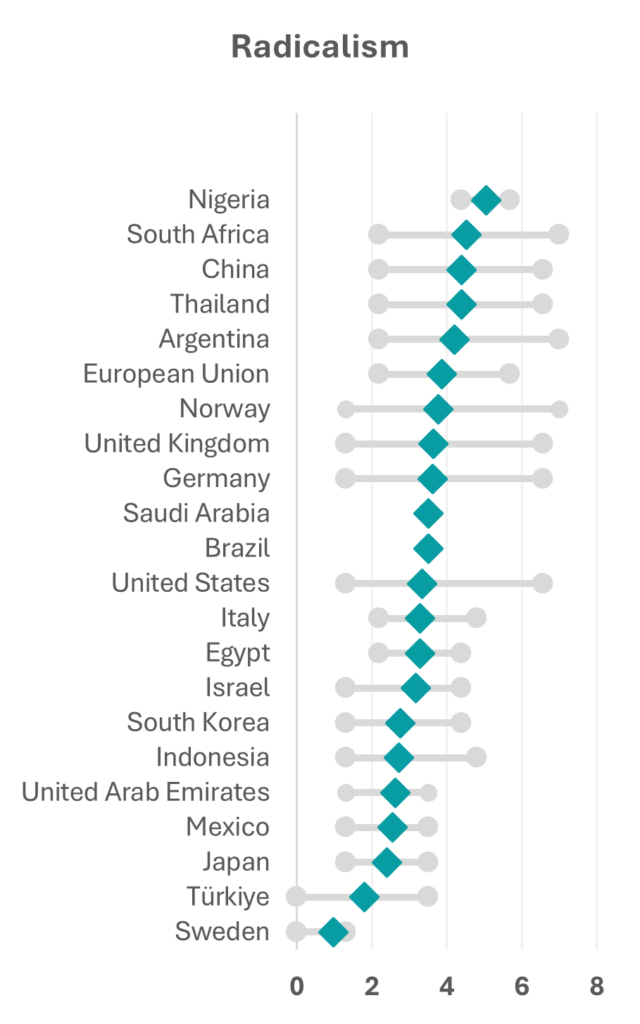Identifying Drivers for Policy Innovation
- Leonis Petschmann
- Sophie-Marie Arendt
- Felix Klein
- 25. März 2025
- BCCG Commentary
Innovation has long driven transformation, reshaping industries and societal behaviors. Consider the automobile: When Henry Ford introduced affordable mass production in 1908, horse-drawn transport and related industries disappeared within two decades.
A similar transformation is unfolding today. The shift from internal combustion engines (ICE) to battery-electric vehicles (BEV) is reshaping the automotive industry, compelling OEMs and suppliers to adapt. Companies heavily reliant on ICE technology must innovate to remain viable and profitable. Suppliers with 95% of their portfolio tied to ICE components face significant challenges unless they embrace change. Innovation is no longer optional — it is the necessary pathway forward.

Beyond Technology: Policy’s Role in Innovation
However, innovation extends beyond technology. Policy changes hinder, enable or accelerate adoption. Examine the pharmaceutical industry: Online pharmacies like DocMorris are disrupting traditional business models. While German law currently protects brick-and-mortar pharmacies, these legal safeguards might eventually be lifted, leading to a significant reduction in their numbers. This example illustrates that transformation requires both, technological progress and policy innovation. Otherwise, transformations cannot be moderated, and economies face challenges.
Policy innovation is a multi-stage process through which governments turn ideas into enhanced policies and policy processes. This enables them to progress, compete, and stand out in the global market. Policy innovation involves identifying constituents’ needs and accelerating the development, testing, implementation, and dissemination of policies.
At Vindelici, we have developed a model to assess policy innovativeness, providing insights that help stakeholders navigate and influence policy landscapes. Our framework supports:
• Gaining a competitive edge through policy insights
• Developing targeted policy recommendations
• Identifying and leveraging policy windows
• Utilizing political stream analysis
Our structured approach enables policymakers and businesses to craft data-driven narratives and align strategies with evolving regulatory environments.
The Four-Dimensional Policy Framework
To systematically assess the innovativeness of policies that drive transformation, we employ a four-dimensional framework. The developed approach is unique in combining the four variables Proactivity, Radicalism, Empiricism and Adaptability. However, these characteristics have been commonly used or in different combinations in the political sciences.
Proactivity assesses the extent to which a policy anticipates and addresses future trends, risks, and opportunities. This dimension assesses how well a policy is equipped to handle emerging scenarios, making it a critical attribute for forward-thinking governance.
Radicalism evaluates the degree of fundamental change a policy introduces. A radical policy is characterised by significant, comprehensive, and often rapid changes that transform the existing framework. Radical policies overhaul the status quo with transformative approaches rather than incremental adjustments.
Empiricism measures reliance on empirical data, research, and evidence-based decision-making. This dimension underscores the importance of evidence-based policymaking in achieving effective and credible outcomes.
Adaptability examines how well a policy adjusts to new information, changing conditions, and unforeseen circumstances. Adaptive policies incorporate continuous feedback mechanisms, maintaining their effectiveness over time.
The four dimensions serve as objective markers of innovation by identifying the degree to which policies deviate from conventional norms. By analysing policies across these dimensions, policymakers can objectively evaluate their innovativeness and potential approach.
With our analysis, we do not aim for normative judgment but for quantifying the innovativeness of policies. Therefore, we conduct a systematic analysis of policy content using custom-trained Artificial Intelligence. The AI removes bias, allowing for a neutral and data-driven determination of how innovative a policy truly is.
The analysis process starts with Input, where the AI model analyses a policy document in its original language. The processing of policy documents is guided by a specialised agent equipped with access to comprehensive reference materials. The reference materials contain claims based on the analysed policies, categorised into the four dimensions of the defined framework. In the Output stage, the model identifies up to five insights per dimension in the original policy document.
Next, Scoring categorises insights by strength and impact (Weak, Medium, Strong) based on reference criteria. In Processing, these insights are converted into numerical scores, aggregated, and normalised on a 0-7 scale for an objective assessment.

Figure 1: Example of a policy evaluation for the automotive sector based on our model
Process and Results of our Analysis
We applied our framework to assess global policies supporting the transition to battery-electric vehicles, analysing over 160 policies across 22 countries between 2017 and 2024. Our findings highlight that policy characteristics vary significantly by region. Countries that were late to implement EV policies tend to compensate with more radical policy measures. Notably, Nigeria and South Africa stand out for their high levels of proactivity and radicalism, actively driving significant changes in their automotive policies. In contrast, Germany, Italy, and Japan have adopted a more moderate approach, balancing innovation with gradual implementation. Meanwhile, Norway tends to take reactive policy stances, adjusting regulations in response to external developments. As a leading country in the global automotive transformation with high EV adoption rates, the need for radical policy shifts is significantly diminished.


Figure 2: Results of our analysis with a focus on proactivity and radicalism
The analysis revealed significant variance in policy innovativeness across all categories. Thereby, most countries lie within a range of innovation levels, reflecting changes in government and policy styles over time. The analysis additionally reveals which countries value which innovation category the most, which reveals their specific policy-making styles.
Recommendations for policy designs supporting innovation
The above-given excerpt represents only a fraction of the potential analyses and insights we can make available to policymakers. Our analytical framework is not limited to the automotive sector; it can be applied across industries to evaluate policy frameworks concerning their degree of innovation. By identifying the factors that enable or hinder innovation, we empower stakeholders to make informed decisions in an evolving regulatory landscape. Knowing the policy-making styles of countries further supports strategic policy-making decisions.
Leonis Petschmann, Sophie-Marie Arendt & Felix Klein
Vindelici Advisors AG